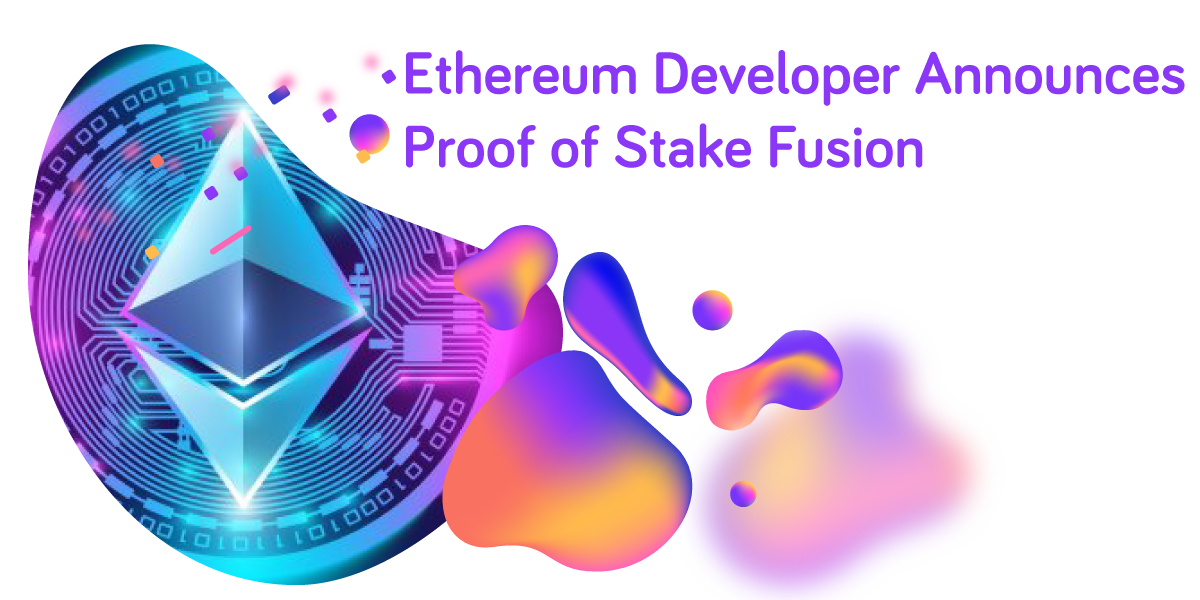Ethereum fusion refers to the combination of Ethereum Mainnet that already exists and works using Proof of Work consensus and algorithms with Proof of Stake. The advantages are faster transactions, lower gas fees, and less energy for transaction validation. Thus we can talk about higher efficiency and lower cost. Besides these advantages, the community considers that Ethereum’s fusion will grow the value of ETH coins because, in the Proof of Stake ecosystem, rewards collected by miners are distributed based on the held amount of cryptocurrency that is staked. So the coin has a more excellent utility — a critical factor in the crypto market.
This Ethereum fusion has been a subject of discussion for some time now in social media communities, and it should have been completed by June 2022. Still, Tim Beiko, Ethereum’s developer, has announced recently that it will take more time, probably months, because of the complexity of procedures that Blockchain IT programmers have to go through. Beiko clarified that there is no official date. One will not even be set or announced until developer teams have enough faith that software implementations are tested, and there are no errors. A GitHub encapsulates all the changes and technical difficulties of this fusion — and you can find it here. The crypto world is bewildered because people and investors want to know how this situation will affect them and their investments.
The work behind the scenes is even more overwhelming, knowing that Ethereum fans and traders are worried about the difficulty bomb. This bomb or difficulty explosion was introduced in Ethereum’s network as a mechanism that forces the Proof of Work consensus to stop producing blocks of data, making mining unprofitable and discouraging miners from keeping the chain alive after the Proof of Stake fusion. The idea behind all of this is a facile transition toward PoS, without interruptions of data or work, so traders will not feel this transition that is developing behind. However, we still do not know how the Ethereum Blockchain will behave when the fusion happens, and the difficulty bomb will start ticking.
On the GitHub posted above, one can find how this difficulty bomb will start to be felt around May, actively contributing to the processing time of blocks in June and July, and how these will become very slow around August. The progress can be tracked here. If developers do not think they can implement the fusion on Ethereum’s Mainnet before block time is slowed down, the process will be postponed again.
Will Ethereum’s gas fee be reduced after the fusion?
We all know that gasoline price has risen to abnormal levels recently. Still, Ethereum’s gas was always famous for its expensive cost, especially when the network is congested and gas prices soar increasingly. Therefore, one of the main questions regarding this fusion is: Will Ethereum’s gas cost be lower? Unfortunately, the answer is still unclear. It is not expected that gas cost will be affected immediately after the fusion, but it should gradually decrease over time once network transactions become simpler.
How long is it going to take? No one can answer that for sure. One thing is certain: that sharding is one of the subsequent stipulations, and that network upgrade will substantially decrease gas costs.
Whatever is to come for Ethereum, one thing is certain: it will still remain one of the most popular coins, as it revolutionized the whole industry. If you want to trade Ethereum and other hundreds of cryptocurrencies in a safe, reliable, and user-friendly environment, register on IXFI today. Take a step forward with Your Friendly Crypto Exchange.
Disclaimer: The content of this article is not investment advice and does not constitute an offer or solicitation to offer or recommendation of any investment product. It is for general purposes only and does not take into account your individual needs, investment objectives and specific financial and fiscal circumstances.
Although the material contained in this article was prepared based on information from public and private sources that IXFI believes to be reliable, no representation, warranty or undertaking, stated or implied, is given as to the accuracy of the information contained herein, and IXFI expressly disclaims any liability for the accuracy and completeness of the information contained in this article.
Investment involves risk; any ideas or strategies discussed herein should therefore not be undertaken by any individual without prior consultation with a financial professional for the purpose of assessing whether the ideas or strategies that are discussed are suitable to you based on your own personal financial and fiscal objectives, needs and risk tolerance. IXFI expressly disclaims any liability or loss incurred by any person who acts on the information, ideas or strategies discussed herein.


